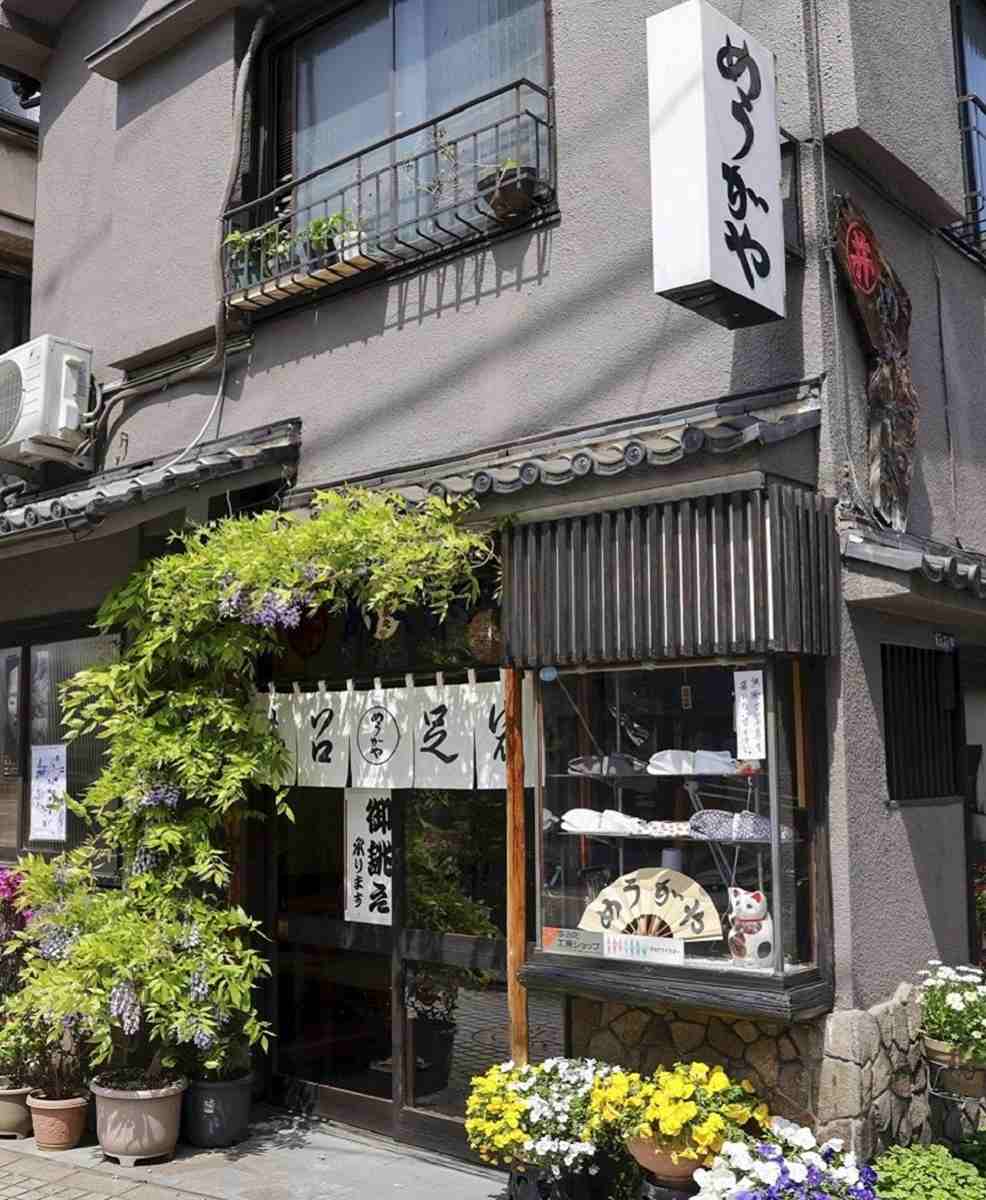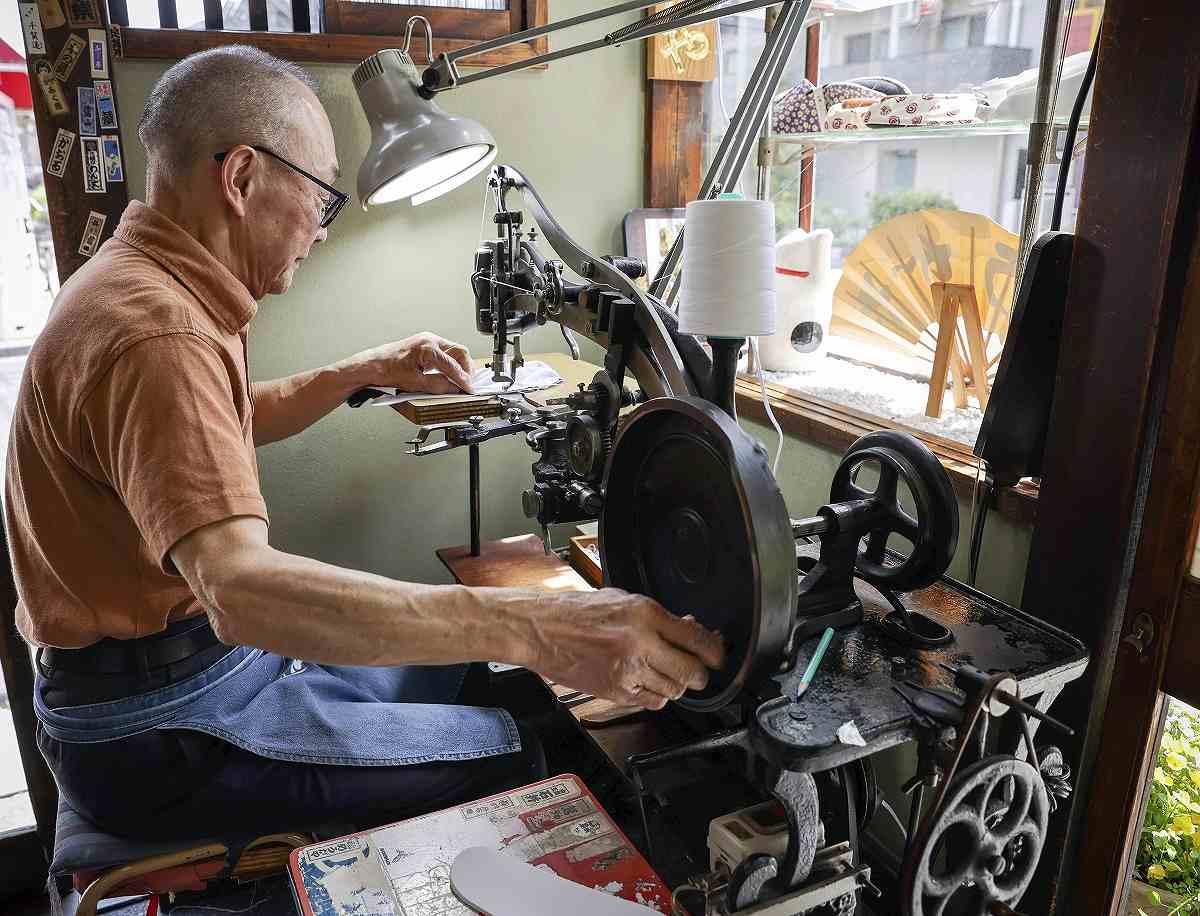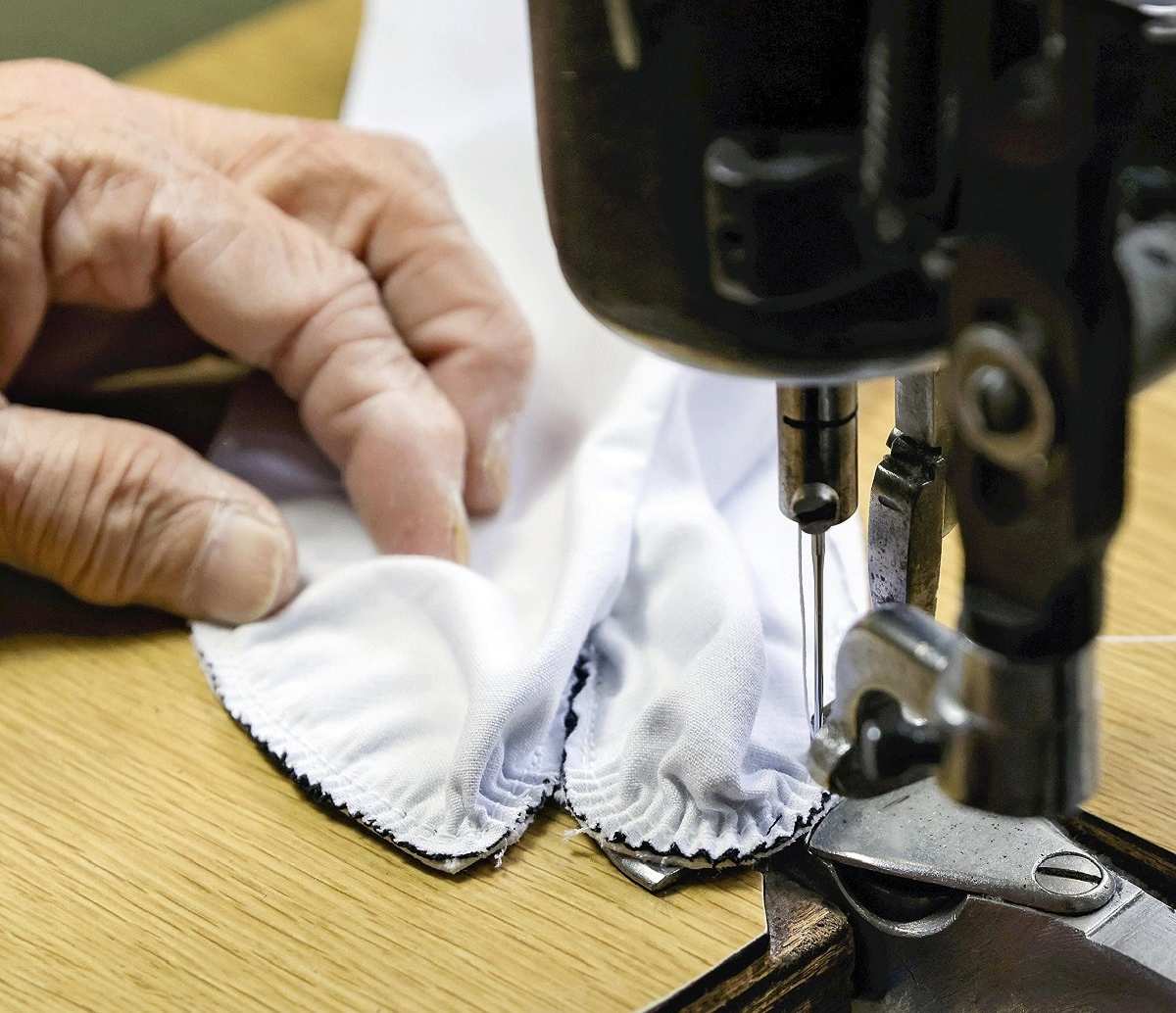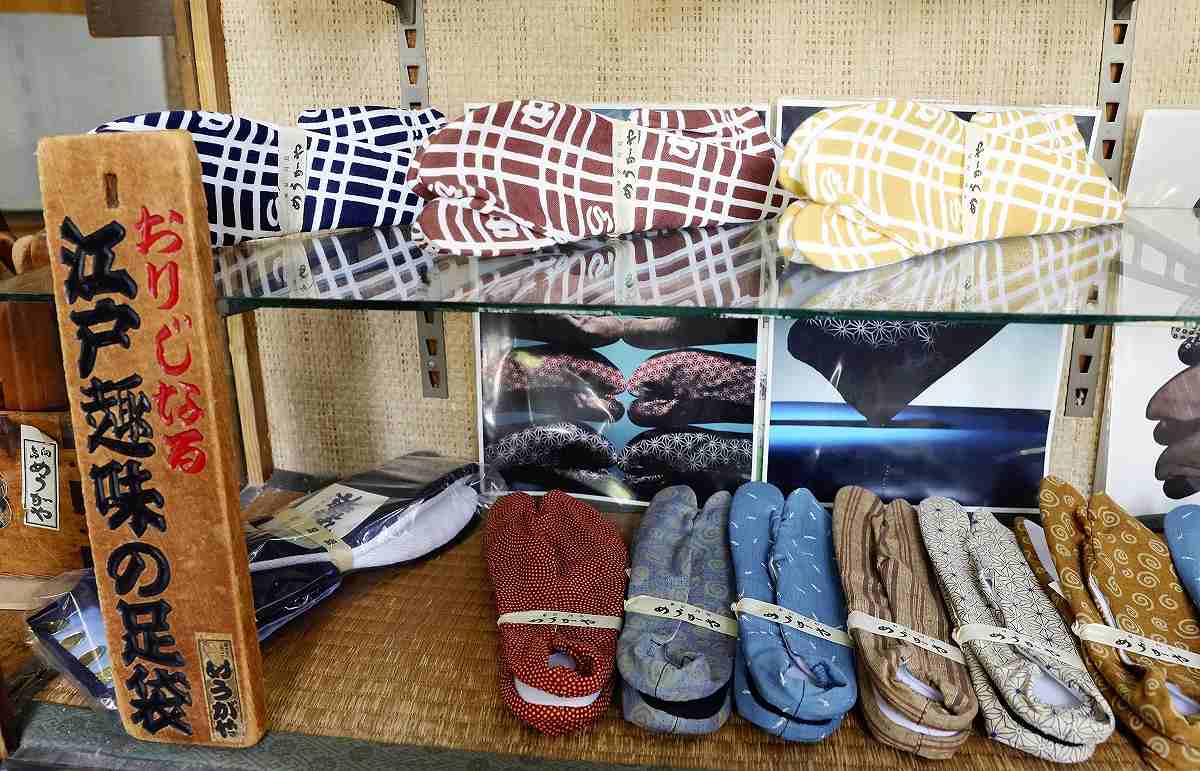
Mukojima Meugaya
13:21 JST, July 1, 2024
Mukojima Meugaya is about a 10-minute walk northwest from Oshiage Station at the foot of Tokyo Skytree in Sumida Ward, Tokyo. With a foot-shaped sign and a traditional noren curtain out front, Meugaya deals with Japanese tabi socks, which have become a rare sight.
The shop was founded in Taito Ward’s Asakusa area in 1867, at the end of the Edo period (1603-1867), after the right to use the name of Meugaya, which is pronounced Myogaya in Japanese, was granted by the parent store in what is now Tokyo’s Nihombashi district. Mukojima Meugaya moved to its current location after the Great Kanto Earthquake in 1923.

Yoshikazu Ishii sews the toe section of a tabi sock using a 100-year-old sewing machine.
Once inside, the first thing that drew my attention was a large sewing machine. According to Yoshikazu Ishii, 72, the fifth-generation owner of Meugaya, the 100-year-old machine is capable of carrying out complicated stitching work and was brought into the store about 50 years ago.
Ishii uses the machine to stitch the toe section of tabi. Turning the handle of the machine by hand, he carefully sews the socks while rotating them. This is one of the most difficult tasks when making tabi. There used to be craftspeople who specialized in the sewing of tabi toe sections.

Stitching of the tabi toe section requires delicate handling.
“The sewing machine and the workbench are irreplaceable. I take good care of them because it’s difficult to repair them now,” Ishii said.
Seventy to eighty percent of tabi manufactured at Meugaya are custom-made and sold to geisha in the Mukojima area of Sumida Ward, which once flourished as a place for nighttime entertainment. Other customers include noh actors, sumo wrestlers, and tea ceremony and flower arrangement teachers.
Tabi-making involves 20 steps, including measuring each foot, making patterns, cutting them and sewing. Ishii divides the work with his wife Kiyoko, 73, their son Kensuke, 46, and others. They make between 10 and 20 pairs of tabi a day.
The store also sells ready-to-wear products, and the variety of patterned tabi are fun to look at.

A variety of tabi socks are seen at Meugaya.
When giving his tabi their finishing touches, Ishii places them on a wooden mold and taps the top of the tabi with a wooden mallet to shape them. He does all of this while wearing an earnest look on his face. The mallet hitting against them makes a comforting sound.
Ishii has 45 years of experience making tabi, and many of his tools have been in use since the founding of the store.
“In order to keep the tradition alive, I have to keep improving my skills. I think training takes a lifetime,” he said. I could feel the sense of pride in Ishii’s voice as he said he is still in training, even though he has already spent more than half of his life in the industry.
***
Mukojima Meugaya
Address: 5-27-16 Mukojima, Sumida Ward, Tokyo
Access: A 12-minute walk from Oshiage Station on the Toei Asakusa Line, Hanzomon Line, Keisei Oshiage Line and Tobu Isesaki Line.
Hours: Open from 9 a.m. to 6 p.m. Closed on Sundays and national holidays.
Related Tags
"Features" POPULAR ARTICLE
-

Sanrio to Open Museum in Yamanashi Pref. Dedicated to Founder, Exhibits Include Hello Kitty, Other Characters
-

Autumn Foliage Surrounds Visitors to Tokyo’s Showa Kinen Park
-

My Daughter No Longer Speaks to Me, But I Want to See Her and My Grandchild
-

Kumamoto: Public Bath Refurbished as Library Where You Can Chat, Take Photos
-

Frozen Vegetables: Demand Rises for Convenient, Tasty Domestic Produce
JN ACCESS RANKING
-

Tokyo Economic Security Forum to Hold Inaugural Meeting Amid Tense Global Environment
-

Keidanren Chairman Yoshinobu Tsutsui Visits Kashiwazaki-Kariwa Nuclear Power Plant; Inspects New Emergency Safety System
-

Imports of Rare Earths from China Facing Delays, May Be Caused by Deterioration of Japan-China Relations
-

University of Tokyo Professor Discusses Japanese Economic Security in Interview Ahead of Forum
-

Japan Pulls out of Vietnam Nuclear Project, Complicating Hanoi’s Power Plans

























